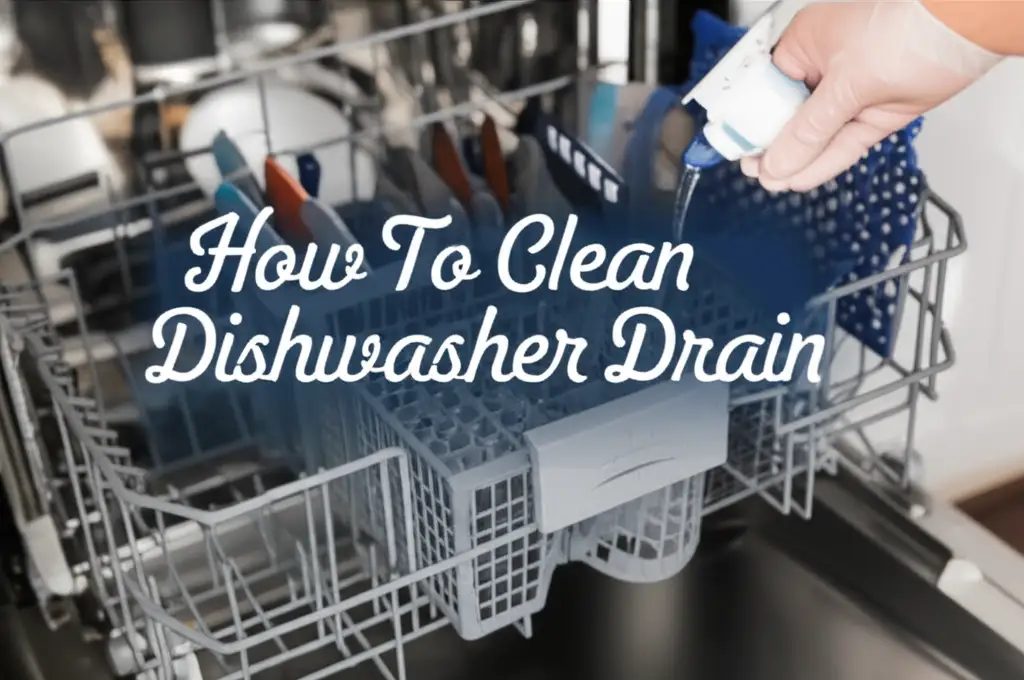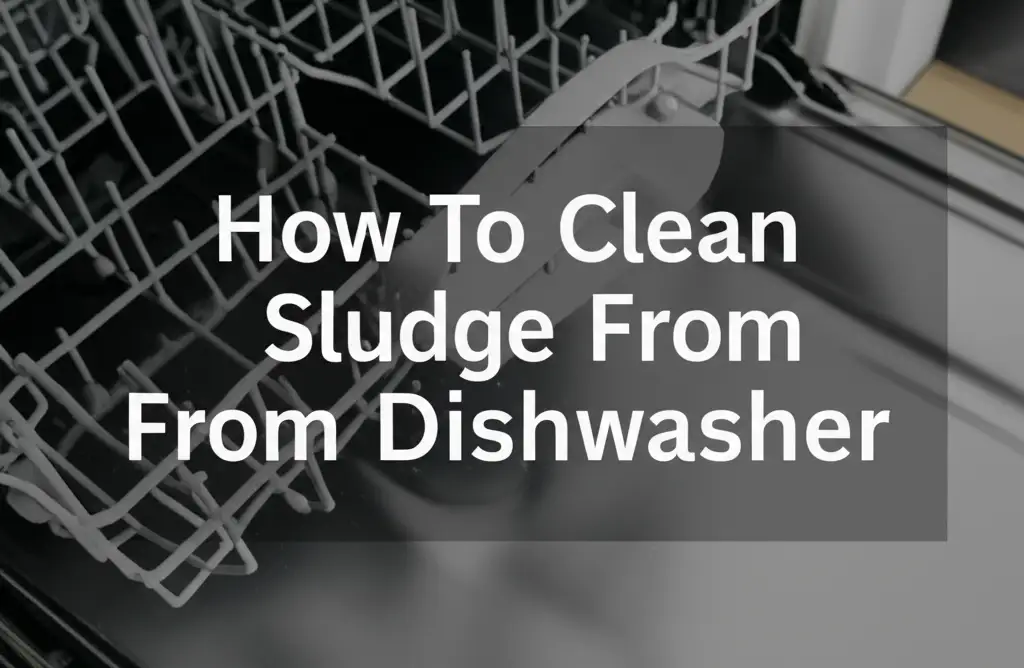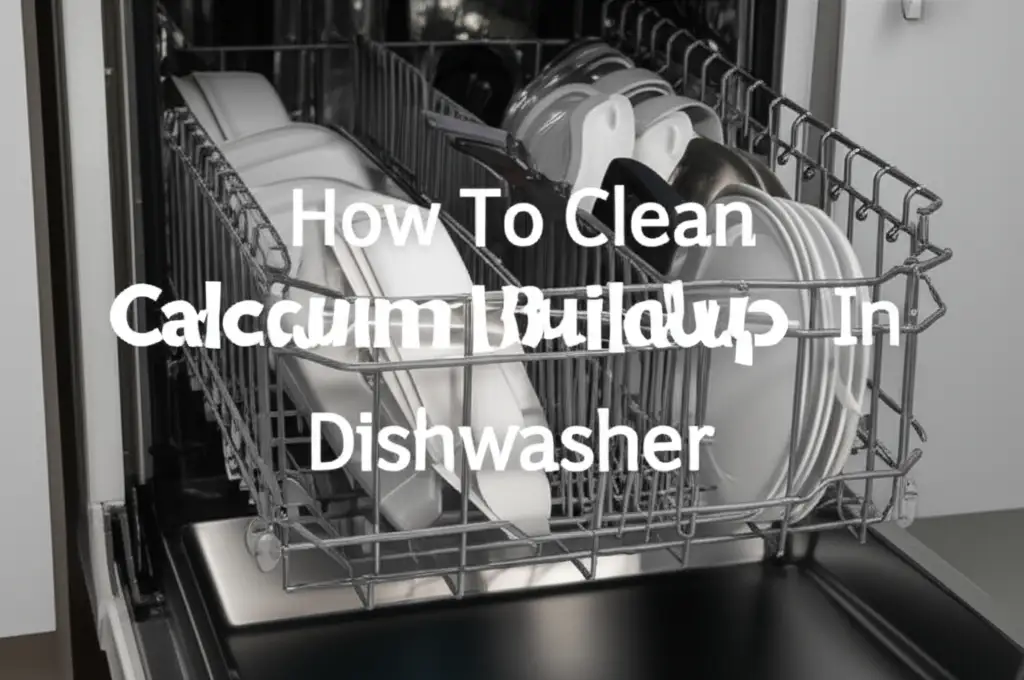· Home Cleaning · 18 min read
How To Clean Dishwasher Drain

Restore Your Dishwasher’s Drain: A Step-by-Step Guide
Does your dishwasher leave dishes dirty, or does water sit in the bottom? These are clear signs your dishwasher drain needs attention. A clogged drain reduces your appliance’s cleaning power and can lead to unpleasant odors. Learning how to clean dishwasher drain components helps keep your kitchen fresh and your dishes spotless. This guide will walk you through the process, from simple checks to deep cleaning methods. You will learn the right tools and techniques to make your dishwasher work like new again.
Takeaway:
- Regularly check and clean your dishwasher’s filter, air gap, and drain hose.
- Use natural solutions like vinegar and baking soda for minor clogs and odors.
- Know when to use stronger chemical cleaners or call a professional for severe issues.
To clean a dishwasher drain, you need to remove food debris, grease, and soap scum that cause blockages. This involves checking the filter, clearing the drain hose, and ensuring the air gap (if present) is free of obstructions, often using simple household items or specialized tools.
Understanding Your Dishwasher Drain System
Your dishwasher drain system is more than just a single pipe. It has several parts working together to remove dirty water. Understanding these parts helps you find and fix problems. Knowing what each component does makes the cleaning process easier. It also helps you spot future issues early.
The main components include the drain filter, the drain hose, and sometimes an air gap. The drain filter is usually at the bottom of the dishwasher tub. It catches large food particles, stopping them from entering the pump and drain hose. If this filter gets clogged, water cannot drain properly. You will notice dirty water left in the machine after a cycle.
The drain hose carries the dirty water from the dishwasher pump to your kitchen sink drain or garbage disposal. This hose can develop kinks or get blocked with grease and food sludge. Over time, a mix of food debris and detergent residue creates a sticky mess inside the hose. This sludge can reduce water flow or stop it completely. Keeping this hose clear is important for proper drainage. Learn how to clean sludge from dishwasher for more details on tackling this specific issue.
Some dishwashers have an air gap on the countertop near the sink. This small cylinder prevents dirty sink water from flowing back into your clean dishwasher. It creates an air break in the drain line. If the air gap gets clogged, water might sit in the dishwasher. It can also cause water to overflow from the air gap itself. Each part plays a vital role in keeping your dishwasher running well.
Signs Your Dishwasher Drain Needs Cleaning
Your dishwasher gives clear signals when its drain needs cleaning. Paying attention to these signs helps you act fast. Ignoring them can lead to bigger problems and cost more money to fix. Early detection saves you time and effort. It also keeps your dishes truly clean.
One common sign is water pooling at the bottom of the dishwasher after a cycle. This means the water cannot exit the machine properly. If you open the dishwasher door and see standing water, your drain is likely blocked. The water may look dirty or have food particles in it. This standing water can cause unpleasant smells inside your appliance.
Another major indicator is foul odors coming from the dishwasher. Even if water drains, lingering smells suggest trapped food particles or mold growth. These particles break down and create a rotten smell. You might notice the smell even when the dishwasher is not running. This indicates organic matter buildup in the drain parts. Discover how to clean mold in dishwasher if you suspect mold is the source of the odor.
Dishes that come out dirty, gritty, or with food particles still attached are also a sign. If your dishwasher cannot drain dirty water effectively, it will redeposit that grime back onto your dishes during the rinse cycle. You might see white film or food bits on plates and glasses. This shows the wash and rinse cycles are not working as they should. Over time, this buildup can also appear as black stuff inside the dishwasher, requiring more specific cleaning. Find out how to clean black stuff in dishwasher to address those particular deposits. Loud noises during the drain cycle also suggest a problem. The pump might struggle to push water through a blockage.
Gathering Your Tools: What You Will Need
Before you start cleaning your dishwasher drain, gather all the necessary tools and supplies. Having everything ready saves time and makes the process smooth. It also ensures you can complete the job safely and effectively. You do not want to stop halfway through to find a missing item.
First, safety is important. Wear rubber gloves to protect your hands from grime and cleaning solutions. Safety glasses are also a good idea to prevent splashes from getting into your eyes. You will be dealing with dirty water and possibly harsh cleaners. Protecting yourself is always the best first step.
Next, collect your cleaning supplies. You will need a few basic items found in most homes. Dish soap, warm water, and a few old towels or rags are essential. A small brush, like an old toothbrush or a bottle brush, is helpful for scrubbing tight spaces. A shallow pan or bowl is useful for catching excess water when removing parts. You might also need a screwdriver set (Phillips and flathead) for some models. Pliers can also be handy for tough clamps.
For tackling clogs, consider natural options first. White vinegar and baking soda are powerful, eco-friendly cleaners. They can break down grease and dissolve minor blockages. You might also want a small wire or a straightened coat hanger. These can help dislodge stubborn clogs in the drain hose. For very tough blockages, a commercial drain cleaner designed for dishwashers might be necessary. However, use these with caution and only as a last resort. Always read product labels carefully.
Finally, keep a bucket nearby for disposing of dirty water and debris. Having a flashlight can help you see into dark areas of the drain system. With these tools ready, you are prepared to tackle any drain cleaning challenge.
Step-by-Step Guide: How to Clean the Dishwasher Filter
Cleaning the dishwasher filter is often the first step to fixing drain issues. This part catches most of the food debris. A dirty filter significantly impacts your dishwasher’s performance. It can cause poor drainage, dirty dishes, and bad smells. I make sure to clean mine regularly to prevent these problems.
Begin by disconnecting your dishwasher from power. Unplug it from the wall outlet, or turn off the circuit breaker that controls it. Safety first is my rule when working with any appliance. This prevents accidental starts and electric shock.
Next, open the dishwasher door and locate the filter. Most filters are at the bottom of the dishwasher tub, under the lower spray arm. Filters come in different designs. Some are a two-piece cylindrical filter, while others are a flat filter plate. Check your owner’s manual if you are unsure how to remove yours. Gently twist or lift to unlatch the filter assembly. Carefully pull it out of the dishwasher. You might see a lot of food particles and grime.
Take the filter to your sink. Rinse it under warm running water to remove loose debris. Use an old toothbrush or a small scrubbing brush to clean away any stuck-on food. I often use a little dish soap to cut through grease. Pay attention to the mesh screens and any crevices. Make sure all food bits are gone. If you notice a slimy buildup, this could be biological growth. Learn how to clean filter in dishwasher for more in-depth instructions specific to various filter types.
Inspect the filter housing inside the dishwasher tub too. Use a damp cloth to wipe away any residue. Make sure the area where the filter sits is clean. Once the filter is spotless, reinsert it into its spot. Ensure it clicks or twists back into place securely. A loose filter can cause issues. This simple step often solves many common dishwasher problems.
Deep Cleaning the Drain Hose and Air Gap
After cleaning the filter, focus on the drain hose and air gap. These components can also harbor clogs and reduce drainage efficiency. Cleaning them requires a bit more effort but is essential for thorough maintenance. This process addresses blockages further down the line.
Start with the air gap, if your dishwasher has one. This is typically a small, chrome cylinder on your countertop near the sink. Unscrew the cover on top and pull it off. You will see two hoses connected to the air gap underneath. Look inside for any visible debris, like food particles or mineral deposits. Use a small brush or a paperclip to clear out any blockages. Sometimes, flushing water through it from the sink side helps. Ensure water flows freely before replacing the cover.
Next, tackle the drain hose. This hose connects the dishwasher to your sink’s drain or garbage disposal. It often gets clogged with grease and food sludge over time. First, disconnect the dishwasher from power again. Then, carefully pull the dishwasher out from its spot under the counter. You do not need to pull it all the way out, just enough to access the back. Locate the drain hose connected to the back of the dishwasher and to the sink drain. Use pliers to loosen the clamps. Have a bucket ready to catch any residual water. Disconnect both ends of the hose.
Inspect the drain hose for kinks or blockages. Run warm water through the hose in the sink. If water does not flow freely, it is clogged. You can use a long brush, like a bottle brush, or a straightened coat hanger to push out the clog. For stubborn grease buildup, mix hot water with dish soap and pour it through the hose. You can also try a solution of half white vinegar and half hot water. Let it sit for 15-20 minutes, then flush. This combination can help break down stubborn grease. Explore how to clean grease from drain pipes for more methods that apply to your dishwasher drain hose. Once clear, reattach the hose securely with clamps. Ensure there are no kinks in the hose when you push the dishwasher back.
Tackling Stubborn Clogs: Natural Solutions
When simple cleaning of the filter, hose, and air gap does not fully resolve the drain issue, a stubborn clog might exist deeper in the system. Before reaching for harsh chemicals, try natural solutions. They are safer for your pipes, your family, and the environment. I always prefer natural methods first.
One highly effective natural method uses baking soda and vinegar. This combination creates a powerful fizzy reaction that breaks down grease, food particles, and soap scum. It is simple to do and surprisingly strong. First, remove any standing water from the bottom of your dishwasher. Then, sprinkle one cup of baking soda directly into the drain area at the bottom of the tub. Make sure it gets into the drain opening.
Next, pour two cups of white vinegar over the baking soda. You will see it fizz and bubble immediately. This reaction is what helps loosen the clog. Close the dishwasher door and let the mixture sit overnight, or for at least 8-12 hours. This gives the ingredients time to work on the blockage. The longer it sits, the better it can dissolve the buildup. Learn more about how to clean dishwasher with vinegar and baking soda for other applications of this powerful duo.
After the waiting period, run a hot water cycle without any dishes. This flushes away the loosened clog and cleans the drain system. The hot water helps carry away all the dissolved debris. This method is excellent for removing stubborn odors too. If the clog persists, you can repeat the process. For basic cleaning or preventative maintenance, running a cycle with just vinegar can also be effective. Find out how to clean dishwasher with vinegar for a simple, routine cleaning method. This natural approach is often enough for most common dishwasher drain clogs.
Chemical Cleaners: When and How to Use Them
Sometimes, natural solutions are not enough for very tough clogs. In these cases, you might consider using a chemical drain cleaner. However, using chemical cleaners requires caution. They can be harsh on pipes and dangerous if not used correctly. I only use them as a last resort.
Before using any chemical cleaner, read the product label carefully. Choose a cleaner specifically designed for dishwashers or kitchen drains. Avoid using standard caustic drain openers, as they might damage your dishwasher’s internal components, especially rubber seals or plastic parts. Look for enzyme-based cleaners or those formulated to dissolve grease and food waste. These are generally safer for your appliance.
Follow the instructions on the product label precisely. Most chemical cleaners require you to remove any standing water from the dishwasher tub first. Then, you pour the recommended amount of cleaner directly into the drain opening. Some products may require you to run a hot water cycle after a waiting period. Others might suggest letting the cleaner sit overnight. Never mix different chemical cleaners. This can create dangerous fumes or reactions. Always ensure good ventilation in your kitchen when using these products. Open windows or turn on an exhaust fan.
After using a chemical cleaner, run at least two empty cycles with hot water. This helps flush out any remaining cleaner residue. It also ensures the product is completely rinsed from your dishwasher before you wash dishes again. This is important for safety and to prevent any chemical taste on your dishes. If the clog remains after a chemical treatment, it might be a deeper issue in your plumbing system. At that point, it is wise to consider professional help. Chemical cleaners can be effective, but they must be handled with care.
Preventative Maintenance: Keeping Your Drain Clear
Preventative maintenance is key to a healthy dishwasher drain. Regular care stops clogs before they start. It keeps your appliance working at its best and avoids costly repairs. I follow these steps to keep my dishwasher drain clear.
First, scrape plates thoroughly before loading them into the dishwasher. Large food particles are the main culprits for filter and drain clogs. Bits of rice, pasta, or vegetable scraps can quickly accumulate. This simple habit significantly reduces the amount of debris entering your drain system. You do not need to pre-rinse, just remove the big chunks.
Second, regularly clean your dishwasher filter. Make it a habit to check it at least once a month. If you use your dishwasher frequently, check it every two weeks. Removing accumulated food grime from the filter takes only a few minutes. This prevents the small particles from breaking down and creating sludge in the drain hose. Refer back to the section on how to clean the dishwasher filter for detailed steps. This quick cleaning is one of the most effective preventative measures.
Third, run regular cleaning cycles with natural cleaners. Once a month, run an empty cycle using white vinegar or baking soda. Place a cup of white vinegar in a dishwasher-safe bowl on the top rack. Run a hot water cycle. The vinegar helps dissolve grease, soap scum, and mineral deposits. It also neutralizes odors. Alternatively, sprinkle a cup of baking soda on the bottom of the empty dishwasher and run a hot cycle. This helps absorb odors and scour away buildup. Explore how to clean calcium buildup in dishwasher for more ways to tackle hard water issues which can impact drain flow. These cycles keep the entire system clean, including the drain hose.
Finally, periodically check the drain hose for kinks. When you push the dishwasher back into its cabinet, the hose can sometimes get bent. A kinked hose restricts water flow and can cause drainage issues. Ensure the hose has a gentle, upward slope from the dishwasher to the sink connection point. This helps gravity assist in drainage. A proper installation prevents water from sitting in the hose. These habits keep your dishwasher running efficiently and prevent future drain problems.
When to Call a Professional
Sometimes, despite your best efforts, a dishwasher drain problem persists. Knowing when to call a professional plumber or appliance technician saves you time, frustration, and potential damage. There are clear signs that indicate a problem beyond simple DIY fixes. I know my limits, and so should you.
One major sign is if water continues to stand in the dishwasher after you have cleaned the filter, hose, and air gap. If natural or even chemical cleaners do not clear the blockage, the clog might be deeper in your home’s plumbing system. The issue could be in the main kitchen drain line. A plumber has specialized tools, like drain snakes, to reach and clear these deep blockages. They can accurately diagnose where the problem lies. You might find similar issues in your kitchen sink drain, indicating a shared problem.
Another reason to call a professional is if water starts backing up into your sink. This often happens when the dishwasher drains into the garbage disposal or the sink drain, and that shared drain system is clogged. When the dishwasher tries to pump out water, it has nowhere to go but up into the sink basin. This suggests a significant blockage in the main drain line. A professional can identify if the issue is with your dishwasher itself or with your home’s broader plumbing.
If you notice leaks from the dishwasher or around the drain hose connections after cleaning, it is time for a professional. You might have damaged a seal or fitting during your cleaning process. Or, the leak could indicate a worn part. Professionals can safely assess and repair or replace faulty components. They can also handle complex tasks like replacing the drain pump. Do not hesitate to call a technician if you feel unsure about any step or if the problem seems too large to handle yourself. Their expertise ensures the job is done right and safely.
FAQ Section
How often should I clean my dishwasher drain?
You should clean your dishwasher drain filter at least once a month, or every two weeks if you use the dishwasher often. Perform a full deep clean of the drain hose and air gap every 3-6 months. Regular cleaning prevents buildup, ensures proper drainage, and keeps your dishwasher working efficiently. This proactive approach helps avoid stubborn clogs and unpleasant odors.
Can I use store-bought drain cleaners in my dishwasher?
Yes, but use caution. Only use drain cleaners specifically designed for dishwashers or kitchen drains. Avoid harsh chemical drain openers meant for toilets or main sewer lines, as they can damage plastic and rubber components inside your dishwasher. Enzyme-based or gentle formulas are generally safer. Always follow product instructions carefully and ensure good ventilation.
What causes a dishwasher drain to clog?
Dishwasher drains primarily clog due to food debris, grease, and soap scum buildup. Large food particles, like rice, pasta, or vegetable scraps, can get past the filter and accumulate. Grease from dishes solidifies in the drain hose. Over time, these materials combine with detergent residue to create stubborn blockages that restrict water flow and cause poor drainage.
Can a clogged dishwasher drain cause odors?
Yes, a clogged dishwasher drain is a common source of foul odors. Trapped food particles and stagnant water create a breeding ground for bacteria and mold. As these organic materials decompose, they release unpleasant smells. Cleaning the drain, filter, and hose helps eliminate these odor-causing buildups, leaving your dishwasher smelling fresh and clean.
My dishwasher drain is clear, but water still pools. What else could it be?
If your dishwasher drain appears clear but water still pools, the problem might be with the drain pump. The pump moves water out of the dishwasher, and if it is faulty or has a small obstruction, it cannot complete its job. A kinked or improperly installed drain hose can also cause issues. In some cases, a clog in your home’s main kitchen drain line can prevent the dishwasher from draining. You may need professional assistance.
Is it safe to use boiling water to clear a dishwasher drain?
Using boiling water is generally not recommended for dishwasher drains. While hot water helps dissolve grease, boiling water can damage the plastic drain hoses and seals within your dishwasher. Very hot tap water, combined with dish soap or vinegar, is a safer alternative for flushing minor grease clogs. Always use temperatures that are safe for your appliance’s components.
Conclusion
Cleaning your dishwasher drain is a simple yet crucial task for maintaining your appliance. We have walked through identifying common signs of a clogged drain, from standing water to foul odors. We covered gathering the right tools for the job and provided a step-by-step guide to cleaning the filter, drain hose, and air gap. We also discussed natural solutions like baking soda and vinegar for stubborn blockages, offering a safer alternative to harsh chemicals. Remember, preventative maintenance, like scraping plates and regular filter checks, will keep your dishwasher drain running smoothly.
By taking these proactive steps, you ensure your dishes come out sparkling clean every time. You also extend the life of your appliance. If you encounter issues beyond simple cleaning, do not hesitate to call a professional. Taking good care of your dishwasher drain saves you from future headaches and keeps your kitchen clean. A well-maintained dishwasher is a happy dishwasher, making your daily chores much easier.
- dishwasher cleaning
- drain clog
- appliance maintenance
- kitchen cleaning
- DIY cleaning
- foul odor
- drain care




